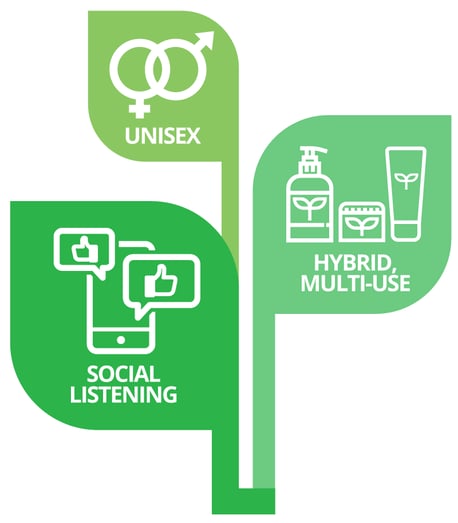
3 Ways Cosmetic Manufacturers Can Drive Portfolio Expansion in 2019
|
Product Portfolio Management
|
Product Lifecycle Management
Posted By:
Trace One

For cosmetic manufacturers, creating competitive, modern product portfolios depends on how rapidly internal departments can capture and capitalize on shifting consumer trends in real time.
As the product categories that consumers want to see on the shelves and their online shopping behaviors change, the origination and implementation of innovation ideas needs to evolve along with it.
Here are three areas that manufacturers will continue to wrestle with in 2019 as they match market fit to their product portfolio.
1. Incorporating Social Media Analytics into Product Ideation
Social media engagement and influencer marketing forms the backbone of many cosmetic brands’ innovation teams. Platforms like Instagram, Facebook, Snapchat and more amplify new products and offer new experiences and channels for direct purchase. This immediate push to market puts product in front of the consumer must faster, and social platforms also create a wealth of user data that manufacturers can use to assess product performance and track consumer trends in real-time.
With such instantly accessible selling and analytics platforms on hand, the feedback loop between market research and product innovation is shortening significantly. To compete in this space, cosmetics brands must be match their internal innovation, R&D and quality testing with this new rate and speed of consumer data analysis.
2. Reformulating for Unisex Cosmetics
In some markets, what has traditionally been separate his-and-hers products are merging into gender-neutral product lines. With the demand for unisex cosmetics on the rise, the challenge for manufacturers now lies in the ability to rapidly create utilitarian formulations that can serve a wider variety of physical attributes in one. The capability to quickly reformulate existing products and drive stability testing for new ones will create winners in the gender-neutral cosmetics market.
3. Developing Hybrid & Multi-Use Products
Similarly, consumers trends suggest a shift toward multifunctional products. From gels that can be applied to both eyelashes or eyebrows, moisturizing sunscreen and liquid blushes that can also function as a lip stain appeal to pocket-sized versions of full-scale products, consumers want more bang for their buck and products that emphasize simplicity and function.
Product categories will continue to blur along with traditional formulations. Manufacturers will need to reach across their product lines to use or create blended ingredients and formulations that can serve many different purposes, requiring greater insight across supplier and co-packer collaboration, R&D, distribution and more.
Discover how to use PLM to solve these challenges by downloading our new white paper, “3 Process-Based Trends Impacting Cosmetics Manufacturers in 2019”
As a result of these changing consumer preferences, manufacturers are beginning to more rapidly adapt their formulations, product design and packaging on the fly.
Armed with more data and increasingly customized, diverse global market distribution, marketing departments often need new formulations in a matter of weeks to keep brands competitive.
Yet, managing and prioritizing the many innovation requests coming down the pipeline can be overwhelming. Rapid marketing timelines are coming into conflict with traditional Research & Development and stability testing processes, which often require months to complete accurately.
To remain competitive and capture consumer preferences in this modern ecosystem, manufacturers must figure out how to streamline the entire supply chain from ideation to distribution.